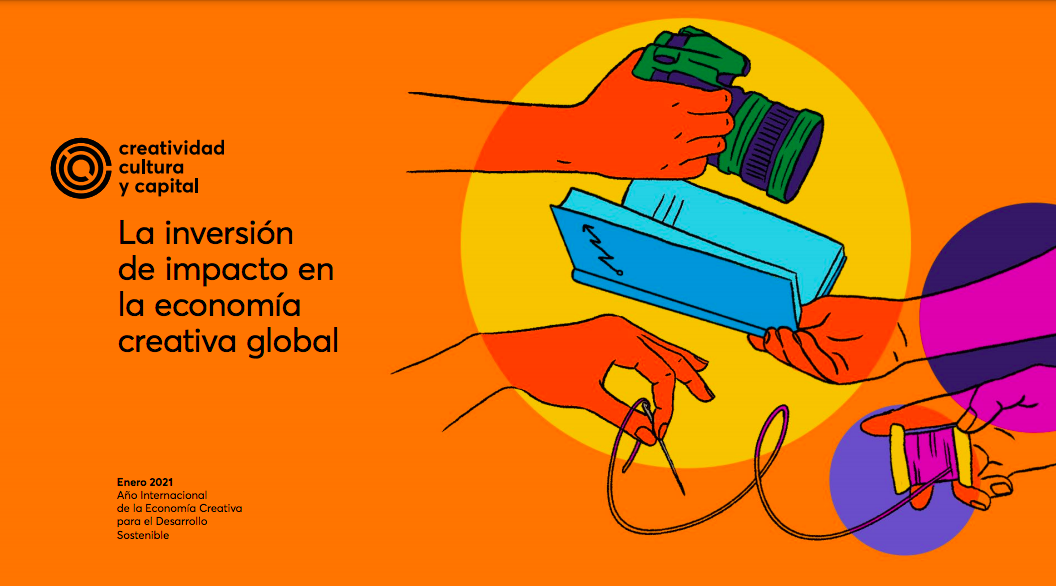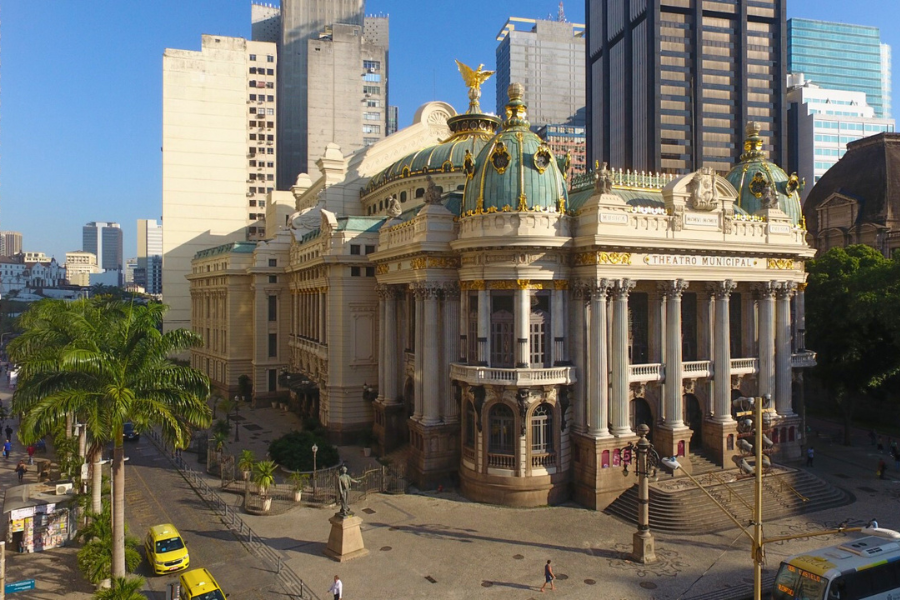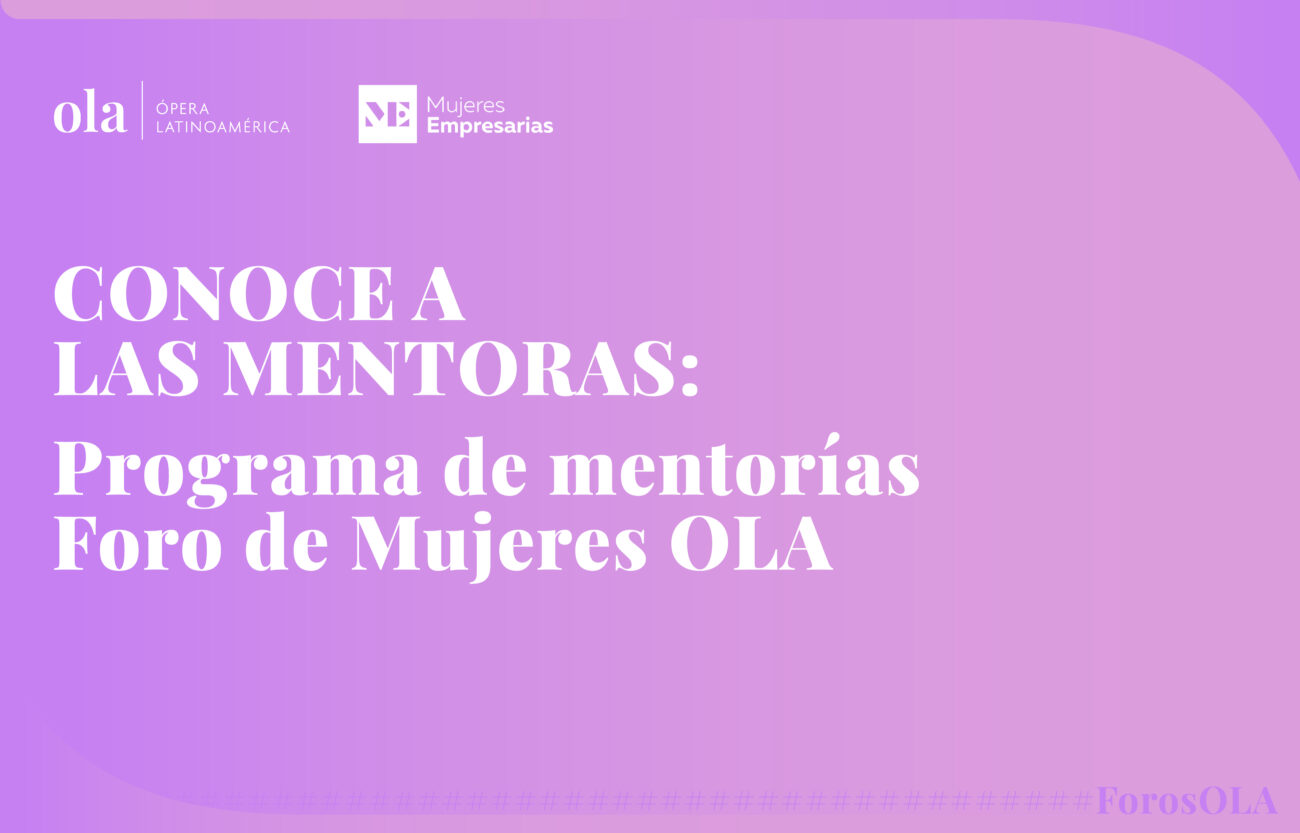Fundación Compromiso y sus socios lanzan “Creatividad, Cultura y Capital: la inversión de impacto en la economía creativa global”

En América Latina, las Industrias Culturales y Creativas (ICC) generaron en 2013 1.9 millones de puestos de trabajo, el 7% del empleo total de las ICC en el mundo, y US$124.000 millones, el 6% de la producción global de las ICC.
La publicación comparte las experiencias de Alejandra Martí, directora ejecutiva de Ópera Latinoamérica con la presentación: Escena Digital; uniendo a la comunidad artística latinoamericana.
Con artículos del violonchelista Yo-Yo Ma, del líder global en inversiones de impacto Sir Ronald Cohen y de la directora de desarrollo digital de la Royal Shakespeare Company, Sarah Ellis, el informe explora cómo las inversiones en las economías creativas son vitales para la innovación continua dentro de las artes, la creatividad en particular y para la economía en general.
Fundación Compromiso anuncia la publicación de una colección de artículos procedentes de todo el mundo que ponen en evidencia la necesidad y la oportunidad que tiene la inversión de impacto de salvaguardar y sostener la economía creativa. (Para verlos presiona AQUÍ)
La publicación se creó en colaboración con Nesta, la fundación de innovación con sede en el Reino Unido y con Upstart Co-Lab, generadora de oportunidades en el ámbito de la inversión de impacto con sede en los Estados Unidos. Esta iniciativa marca el inicio del “Año Internacional de la Economía Creativa para el Desarrollo Sostenible” declarado por Naciones Unidas, reconociendo al sector creativo como un factor clave de crecimiento inclusivo y sostenible en tiempos en los que el mundo se recupera de los efectos de la pandemia.
La inversión de impacto ― inversión realizada con la intención de generar un impacto social y ambiental positivo y medible, además de un retorno financiero― ha crecido en importancia en años recientes, y en la actualidad representa u$31 billones de capital global. Esta iniciativa es la primera consideración relevante que se realiza respecto de las potenciales oportunidades que tienen los inversores dentro de la economía creativa; ilustra cómo el capital de impacto puede ayudar a financiar una economía creativa más inclusiva y sostenible.
El informe aspira a sumar al arte y la cultura como motor de inversiones. En un momento en el que las organizaciones artísticas y la economía creativa (incluidas la moda, el cine, la música y el diseño) deben generar nuevas soluciones para apoyar el desarrollo del sector, es necesario reflexionar acerca de las formas de financiar los proyectos, las instituciones creativas y los emprendimientos culturales, ya que cuentan con el potencial de ser altamente transformadores en términos de generación de ingresos, creación de empleo y ganancias de exportación.
Los ensayos examinan dos grandes temas: Creatividad en Acción, la manera en que el arte, el diseño, la cultura, el patrimonio y la creatividad benefician a los individuos, las comunidades y el planeta, y Conectar Capital de Impacto, el modo en que la inversión de impacto ya se encuentra transformando y estimulando la actividad económica creativa, generando retornos financieros a la vez que un impacto social y ambiental.
Los aspectos destacados incluyen:
- La actividad creativa a nivel mundial es más sustantiva de lo que se reconoce. La gente aprecia el valor de las actividades creativas en su día a día, pero sin ver que representan un motor de la economía global.
- UNESCO prevé que la economía creativa se convertirá en el 10% de la economía mundial en los próximos años.
- Una economía creativa en crecimiento puede crear nuevas soluciones y oportunidades, en particular para aquellos grupos que son subestimados en el contexto mundial, como por ejemplo las mujeres, los jóvenes y las personas que integran comunidades minoritarias.
- La economía creativa también puede generar resultados sociales y ambientales reales.
Tal como queda de manifiesto en este informe, aún no se reconoce plenamente el tamaño y el valor considerable que tiene la economía creativa. Antes de la pandemia, la economía creativa representaba uno de los sectores de la economía mundial de más rápido crecimiento; se preveía que en los próximos años alcanzaría el 10% de la economía global. Este rápido crecimiento es un motivo por el cual las Naciones Unidas reconocen el potencial de la economía creativa para ser altamente transformadora en términos de generación de ingresos, creación de empleos e ingresos de exportaciones. Es, por ejemplo, fuente de 30 millones de empleos en la economía formal y de 300 millones de empleos en la economía informal. En América Latina según UNESCO, en 2013 las Industrias Culturales y Creativas (ICC) generaron 1.9 millones de puestos de trabajo, el 7% del empleo total de las ICC en el mundo, y US$124.000 millones, el 6% de la producción global de las ICC.
Carolina Biquard, directora ejecutiva, Fundación Compromiso, señala: “La creatividad es la nueva normalidad. Es la respuesta para afrontar el presente y para abordar el futuro. Las artes y la cultura siempre han sido la respuesta del hombre a una búsqueda de maneras de hacer evolucionar la civilización. La creatividad es el modo de conectar nuestra inspiración y nuestros activos culturales con el costado práctico y económico de nuestra vida. Nuestros jóvenes, especialmente, tendrán que aprender a vivir en una economía creativa, dentro de un sistema creativo. Esperamos poder diseñar la estructura financiera que necesita este enfoque”.
Fran Sanderson, directora, Arts & Culture Investments and Programmes, Nesta, afirma: “Creemos firmemente en el poder que tiene la economía creativa para producir cambios sociales positivos que sean durables, y en la enorme oportunidad que tiene la inversión de impacto para apoyar y ampliar este cambio. Este informe es el primer paso para demostrárselo al mundo con claridad. El sector ha logrado metas asombrosas sin una estructura de apoyo genuina y global. Por eso estamos realmente entusiasmados por saber hacia dónde puede llevar un esfuerzo más intencional a este movimiento”.
Laura Callanan, socia fundadora, Upstart Co-Lab, explica: “La economía creativa tiene la capacidad de cautivar, involucrar, educar y activar a consumidores más conscientes, como para obtener los beneficios de las cadenas de suministro éticas y sostenibles y de todo el poder que tienen los medios de comunicación para impulsar cambios positivos. Quienes están interesados en promover una economía creativa que sea inclusiva, equitativa y sostenible encontrarán muchas oportunidades para desplegar sus capitales alineados con valores, ahora que el mundo se reconstruye tras la pandemia de la COVID-19”.
Yo-Yo Ma expresa: “El poder de la cultura está en la conexión: nos conecta entre nosotros y con el mundo, ayudándonos a saber que, si te duele a ti, me duele a mí. Teniendo esa fuerza intrínseca y con el apoyo debido, la cultura y la creatividad continuarán siendo la fuente más poderosa de soluciones humanas”.
Con el lanzamiento de esta serie de artículos en un nuevo sitio web, https://www.creativityculturecapital.org/ , Fundación Compromiso, Nesta y Upstart Co-Lab invitan a la contribución con más experiencias que puedan dar cuenta de qué manera la economía creativa genera beneficios sociales y ambientales, y el modo en que el capital alineado con valores respalda estos esfuerzos y que este recurso muestre con claridad los beneficios potenciales de un fondo global de inversión de impacto para la economía creativa inclusiva.
Para ello prevén contar con 100 artículos hacia fines de 2021, creando una fuente de información integral de geografías, sectores y experiencias, presentando una variedad de iniciativas con impactos positivos a través de la creatividad y la cultura, y los modos innovadores en que se emplea el capital alineado con valores para financiarlas.
El sitio web, junto con una serie de eventos organizados en conjunto con socios como la Conferencia de Naciones Unidas sobre Comercio y Desarrollo (UNCTAD), el Global Steering Group for Impact Investment (GSG) y el innovador programa DICE del British Council, crearán una comunidad en torno a este recurso para contribuir a alentar el crecimiento continuo en el sector.





